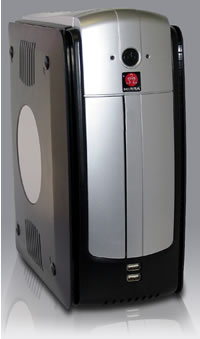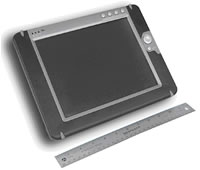Inspired Broadcast Networks (IBN) has announced an electronic music vending Kiosk that will sit at locations around the UK/London. Members of the public will be able to insert a cash payment and once paid for, the electronic music will initially be downloaded using either a USB port, or by inserting an SD memory card into the machine. IBN feel (rightly) that wireless distribution will become dominant and are supporting Bluetooth and WiFi distribution of the content.
The first cash download will take place on Wednesday at IBN’s office in Soho, London. Tracks will be £1. Following this, the kiosks will be rolled out around the UK starting with three mainline London train stations, Charing Cross, London Bridge and Waterloo. We think the choice of these sites is ideal – commuters, bored of their current music selection will be able to charge their portable music players ready for the journey. IBN hope to get to 20,000 sites in the next two years.
All of the music will be supplied by Entertainment UK, the largest supplier of physical music formats in the UK. It’s currently unclear if this partnership will see the kiosk located in the shops that Entertainment UK supplies physical goods to.
The music will initially only be available in protected Windows Media format (WMA). IBN are also working on a system called ‘Linguist’ that they hope will translate between differing makes of DRM, while maintaining the contents protection. They are also ‘in discussions’ with Apple, which is strange. Inspired Broadcast Networks (IBN) is a subsidiary of Leisure Link Group (LLG), is the largest operator of coin-operated entertainment terminals in the UK. The Cloud, a WiFi access company is its sister company.
Back in March IBN signed a deal with Ericsson to provider 5,000 WiFi access points in locations around the UK.
 By 2009, consumers will require at least a 57Mbit/s Internet connection speed – up from today’s 3Mbit/s – to meet the demands of an ever-growing collection of always-on home media devices, according to research carried out by
By 2009, consumers will require at least a 57Mbit/s Internet connection speed – up from today’s 3Mbit/s – to meet the demands of an ever-growing collection of always-on home media devices, according to research carried out by  Siemens have announced the availability of a range of handsets that work with VoIP (Voice over IP) software, Skype. Simply by plugging the USB adapter into a computer running an updated version of Skype, home and business users will be able to make calls using a cordless handset. Calls to other Skype users will be free and calls to International landlines can be made at very low cost using SkypeOut.
Siemens have announced the availability of a range of handsets that work with VoIP (Voice over IP) software, Skype. Simply by plugging the USB adapter into a computer running an updated version of Skype, home and business users will be able to make calls using a cordless handset. Calls to other Skype users will be free and calls to International landlines can be made at very low cost using SkypeOut. Designed for law enforcement, perimeter security and long-range video links,
Designed for law enforcement, perimeter security and long-range video links,